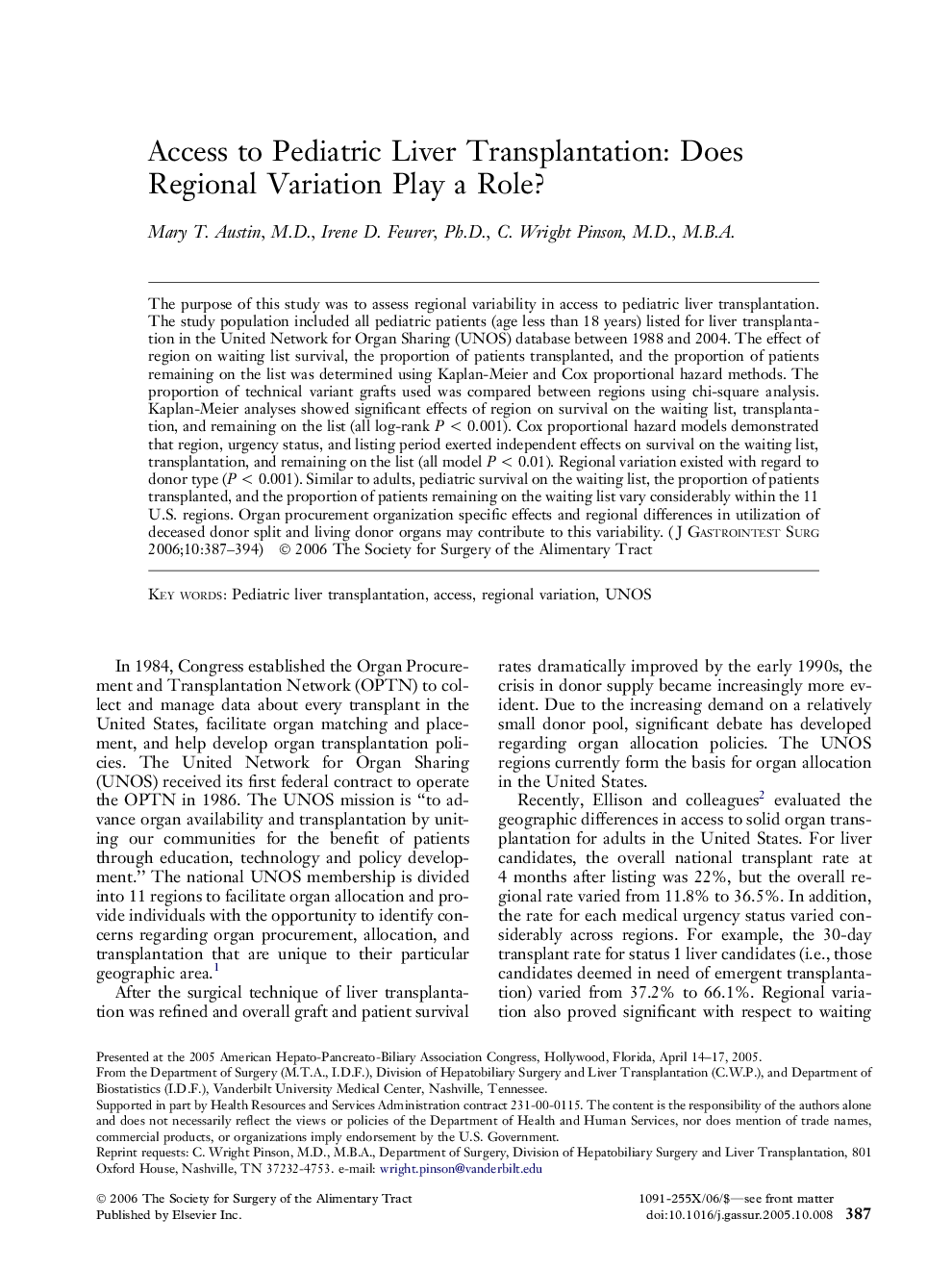| Article ID | Journal | Published Year | Pages | File Type |
|---|---|---|---|---|
| 4297341 | Journal of Gastrointestinal Surgery | 2006 | 8 Pages |
Abstract
The purpose of this study was to assess regional variability in access to pediatric liver transplantation. The study population included all pediatric patients (age less than 18 years) listed for liver transplantation in the United Network for Organ Sharing (UNOS) database between 1988 and 2004. The effect of region on waiting list survival, the proportion of patients transplanted, and the proportion of patients remaining on the list was determined using Kaplan-Meier and Cox proportional hazard methods. The proportion of technical variant grafts used was compared between regions using chi-square analysis. Kaplan-Meier analyses showed significant effects of region on survival on the waiting list, transplantation, and remaining on the list (all log-rank P < 0.001). Cox proportional hazard models demonstrated that region, urgency status, and listing period exerted independent effects on survival on the waiting list, transplantation, and remaining on the list (all model P < 0.01). Regional variation existed with regard to donor type (P < 0.001). Similar to adults, pediatric survival on the waiting list, the proportion of patients transplanted, and the proportion of patients remaining on the waiting list vary considerably within the 11 U.S. regions. Organ procurement organization specific effects and regional differences in utilization of deceased donor split and living donor organs may contribute to this variability.
Related Topics
Health Sciences
Medicine and Dentistry
Surgery
Authors
Mary T. M.D., Irene D. Ph.D., C. Wright M.D., M.B.A.,
